Supernovae are the fate of most massive stars. However, stars with small to medium mass, specifically those with 8 solar masses or less, eventually evolve into white dwarfs. In fact, white dwarf candidates make up approximately 97% of the stars in the Milky Way.
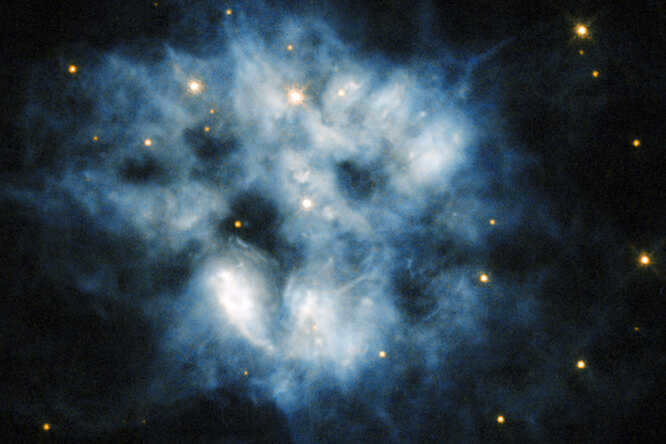
White dwarfs are actually compact, faint, and deceased celestial bodies. They represent the final discernible phase in the life cycle of stars with low or moderate mass.
In comparison to our Sun, a white dwarf possesses a comparable amount of carbon and oxygen, albeit its dimensions are significantly smaller – approximately the size of Earth. The temperature of a white dwarf can reach up to 50,000 Kelvin, yet despite this scorching surface heat, white dwarfs exhibit low luminosity due to their diminutive size.
The emergence of a white dwarf
Main-sequence stars (such as our Sun) originate from clouds of dust and gas that are drawn together by the force of gravity. Stars that are more massive than eight times the mass of the Sun do not go through the white dwarf stage. Instead, they undergo a massive supernova explosion at the end of their lifespan, leaving behind either a neutron star or a black hole.
On the other hand, smaller stars take a different, less dramatic path. Stars with lower to medium masses, similar to our Sun, gradually expand into red giants and shed their outer layers. This process creates planetary nebulae, with the remaining core becoming a white dwarf – essentially the “remains” of a star where no thermonuclear reactions occur.
Red dwarfs, which are extremely small stars, are unable to transform into red giants. Instead, they exhaust all their hydrogen and ultimately evolve into faint white dwarfs. Nonetheless, red dwarfs consume their fuel over trillions of years, a significantly longer period than the age of the universe (13.8 billion years). We will be fortunate enough to witness this incredible phenomenon.
Unique Features of White Dwarfs
When a star depletes its fuel, it undergoes a self-collapse. White dwarfs possess a mass equivalent to that of the Sun, yet they have a radius comparable to that of Earth. Consequently, they rank among the most compact entities in the cosmos, with only neutron stars and black holes exhibiting higher density. The gravitational force on the surface of a white dwarf is 350,000 times greater than that on Earth. This implies that an individual who weighs 70 kilograms on Earth would experience a weight of 22.7 million kilograms while standing on the surface of a white dwarf.
The destiny of the white dwarf
Many white dwarfs fade away, releasing all their energy and transforming into black dwarfs. However, if the white dwarf has a companion star, the situation can be quite different – such a dwarf has the ability to attract material from its companion onto its surface.
Increasing the mass of a white dwarf can lead to intriguing outcomes. One possibility is that the additional mass could cause the white dwarf to collapse into a much denser neutron star.
If the companion is another white dwarf rather than an active star, the two “dead stars” will merge into a solitary star. There is another possibility – sometimes a white dwarf can extract enough material from its companion to briefly become a supernova. Since the white dwarf remains intact, it can repeat this process multiple times, bringing itself back to life over and over again.
TechInsider Network Edition
Founder of "Fashion Press" LLC: 119435, Moscow, Bolshoi Savvinsky per. 12, str. 6, floor 3, room II;
Editorial office address: 119435, Moscow, Bolshoi Savvinsky per. 12, p. 6, str. 6, floor 3, room II; Editorial office address: 119435, Moscow, Bolshoi Savvinsky per. 6, floor 3, room II;
Editor-in-Chief: Nikita Vasilenok
Editorial office e-mail address: [email protected]
Editorial office phone number: +7 (495) 252-09-99
Information product label: 16+
The network edition is registered by the Federal Service for Supervision in the Sphere of Communications, Information Technologies and Mass Media, registration number and date of decision on registration: series EL No. FS 77 – 84123 dated November 09, 2022.
© 2007 – 2023 Fashion Press LLC
By publishing content on the Website, the User provides Fashion Press LLC with non-exclusive rights to utilize, reproduce, distribute, create derivative works, as well as exhibit the content and make it accessible to the general public without any charge.
If you observe the diminishing radiance of a white dwarf star, you can witness the disintegration of the rocky remnants of former planets within it. Astronomers have already observed a collapsing star ripping apart something much larger than itself. Could the high temperature of white dwarfs be a contributing factor in this phenomenon?
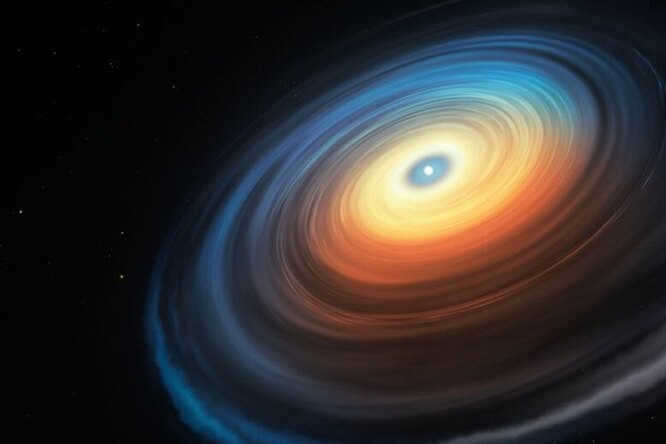

This is approximately how artists and astronomers theorize that white dwarfs in the vastness of the universe can coexist alongside and impact colossal planets.
A diminutive white dwarf. It is also dense, fierce, and extreme. No, we are not referring to a specific individual, but rather to celestial bodies that possess a shared characteristic and are colloquially referred to as such among astronomers.
It is pertinent to consider that sizes in the cosmos hold truly astronomical proportions, and what we perceive as white dwarfs in our earthly scale is truly monumental.
Nevertheless, astronomers note a gradation even within this categorization, as there exist sizable white dwarfs and even supergiants. The cosmic Davids and Goliaths engage in constant combat, yet the outcome of their clashes does not currently pose a threat to humanity. At least, not for the time being. Let’s delve deeper into this matter.
One of the most well-known white dwarfs is Sirius B, which, along with Sirius A, forms a double star system that has fascinated astronomers since the time of the Ancient Egyptians.
White dwarfs represent the final phase in the lifecycle of a star. Once their fuel supply is exhausted, these celestial objects collapse under the force of their own gravity, compressing the entirety of their red-hot gas mass into a sphere roughly the size of Earth.
In essence, a white dwarf can be thought of as a deceased star in the context of stellar evolution. Interestingly, it may also have the potential to carry along a few neighboring large planets if they happen to be in close proximity.
Similar to humans, stars progress through various stages of existence, including birth, youth, adulthood, old age, and ultimately, death. However, the specific final stage experienced by a given star depends on its initial mass.
The transformation of a star into a white dwarf happens when the hydrogen in its core is completely consumed, resulting in the compression of the star’s core and the expansion of its outer layers. As a result, helium is produced, leading to the formation of carbon and oxygen. However, if the initial mass of the white dwarf is insufficient to raise the temperature of its core for further reactions, the outer layers eventually become a planetary nebula, while the core, composed of carbon and oxygen, remains as a white dwarf.
The temperature on the surface of a white dwarf star
A white dwarf star is a celestial object that failed to meet the necessary mass requirements to become a neutron star. Despite its smaller size, the average density of a white dwarf is a million times greater than that of regular stars.
This is due to the fact that, typically, the radius of a white dwarf is similar to that of Earth, but its mass is comparable to that of the Sun. Additionally, the density of a white dwarf can range from one to one hundred million grams per cubic centimeter.
What is the temperature of white dwarfs? It additionally relies upon the size of the white dwarf and ordinarily arrives at 200,000 K. The bodies of such stars stay adequately hot to emanate heat for many billions of years. This sparkle can give space experts a lot of data about the compound organization of a white dwarf. It’s not extraordinary to see clues of metals – proof of rough planets vaporizing in the hot blazes of a withering star. Yet, what needs to occur for such a retention to occur?
White dwarfs are estimated to account for up to 10% of the total population of stars in the universe. These celestial bodies gradually cool down over time due to the absence of surface reactions, essentially becoming “remains” of stars.
However, for this process to occur, the stellar system must experience some form of disruption. The planets must be in close proximity to the white dwarf, which usually indicates a disturbance caused by a nearby object of significant mass, such as a massive planet.
The subsequent journey of a dying star is quite fascinating and, as one can imagine, heavily influenced by its mass. Other stars that are fortunate enough to have a slightly higher mass, exceeding 1.44 solar masses, do not transform into white dwarfs but instead become black holes or neutron stars, with the latter category including pulsars.
There are also pulsating white dwarfs in the Universe, which exhibit periodic changes in brightness of up to one-third of their normal luminosity. While neutron stars, known as pulsars, can rotate tens of times per second, white dwarfs have much longer rotation periods, sometimes lasting several hours.
By studying the pulsations and overall luminosity, astroseismologists can determine the density, size, and mass of a white dwarf star. They classify white dwarfs into two spectral groups: “hydrogen” and the less common “helium”. The first group consists of stars that do not show any helium spectral lines, while the second group consists of stars that do not exhibit any hydrogen lines.
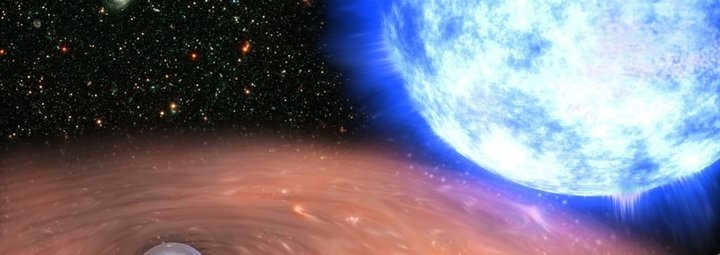
In the vast expanse of the cosmos, alongside the youthful stars that shine brightly in the visible spectrum, there exists an immense multitude of stars that emit a faint, almost imperceptible glow. These celestial bodies are known as white dwarfs, which have completed a significant portion of their stellar evolution and are now entering a phase of decline.

Understanding white dwarfs
The challenge in estimating the stellar population of our galaxy arises from the technical complexities involved in detecting these celestial objects. The abundance of stellar gas, cosmic dust, nebulae, and clusters that populate the arms of the Milky Way galaxy hinders deep space observation.
In earlier times, when technology was not advanced enough to facilitate detailed space studies, white dwarfs were perceived as rare occurrences. However, with the advent of powerful telescopes capable of exploring space across different spectra, humanity now has the means to delve into the depths of the universe. On average, there are approximately 100 white dwarfs per sphere of space with a diameter of 60 light years. In our galaxy alone, there are up to one and a half thousand such stellar objects.
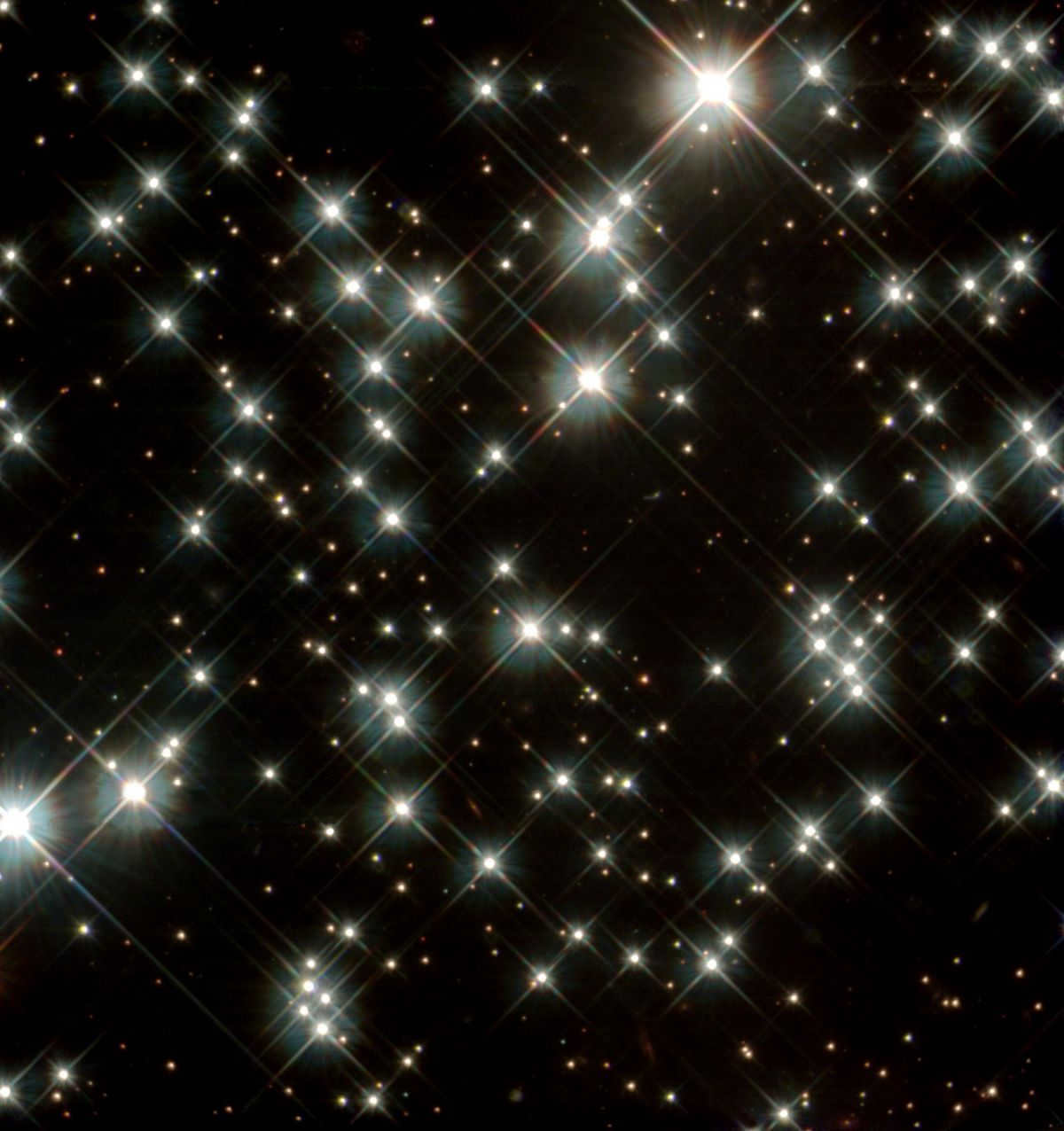
Milky Way galaxy, white dwarfs.
Considering the age of the Universe, one and a half thousand is a significant number of white dwarfs in the Milky Way galaxy. Over the course of 13-14 billion years, these stars have aged and are now awaiting their fate. However, this number is just a fraction of the total number of white dwarfs in the universe. When we take into account the hundreds, or even thousands, of other galaxies, the total number of white dwarfs becomes much larger. Despite their small size, there may be a countless number of these stars throughout the universe.
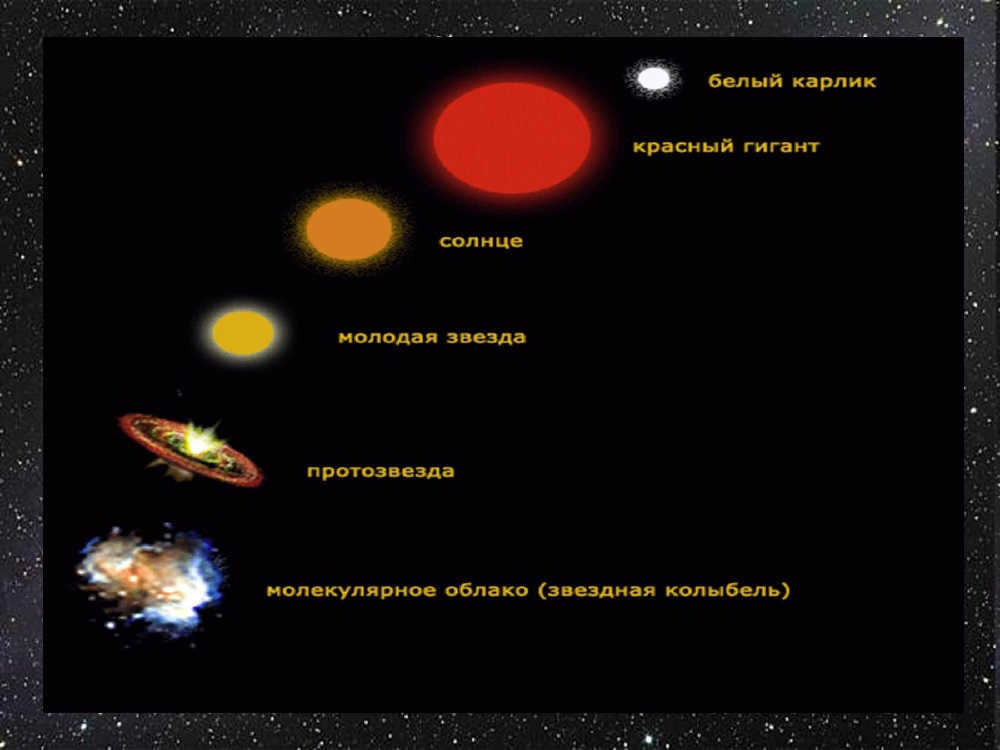
The immense pressure is responsible for the density being so high. The remnants are in a state of equilibrium due to the gravitational forces exerted by the object’s mass and size.
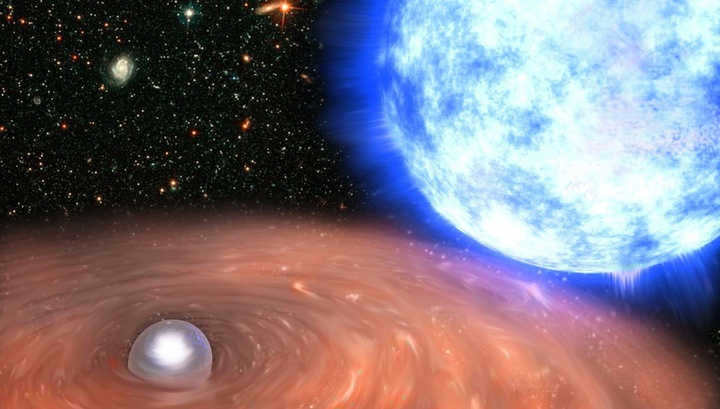
The absence of nuclear reactions causes the star to gradually cool down. The radiation intensity decreases slowly, by 1-2% over hundreds of years. The cooling process is extremely long and can last for trillions of years before the star completely dissipates into space. When a star first becomes a white dwarf, its surface temperature is still relatively high at 100-200 thousand Kelvin. However, for older white dwarfs, the surface temperature becomes much lower at around 5000K.
The Sun will also experience a similar fate. In approximately 5-6 billion years, our main star will exhaust its hydrogen and helium reserves and transform into a white dwarf.
Discovery of white dwarfs: a historical perspective
The field of stellar science truly came into focus during the mid-20th century. By the early 1930s, astrophysicists had developed the ability to accurately calculate the various parameters of observed stars, including their luminosity, size, and temperature. However, one star stood out as an anomaly, disrupting the established understanding of stellar physics: 40 Eridanus B, first discovered in 1783 by the renowned astronomer William Herschel. Unlike typical stars, this celestial body exhibited peculiar characteristics, such as its small size, low luminosity, and high temperature. These findings challenged the existing laws of physics. As time progressed, several more such objects were discovered, including one that would become famous: Sirius B. Despite its modest size and overshadowed existence next to its dazzling neighbor Sirius, Sirius B played a crucial role in advancing our understanding of white dwarfs.

German astronomer Wilhelm Bessel made an important discovery while observing the behavior of Sirius. He noticed an unusual pattern in its movement, as it seemed to follow a sine wave in outer space. This puzzled the scientist for many years until he finally concluded that there must be another star nearby, exerting gravitational forces on Sirius. It wasn’t until 1862 that A. Clark, using a powerful optical telescope, was able to confirm Bessel’s predictions and calculations by detecting the unassuming neighbor of Sirius. This finding validated Bessel’s research and demonstrated the accuracy of his theories.
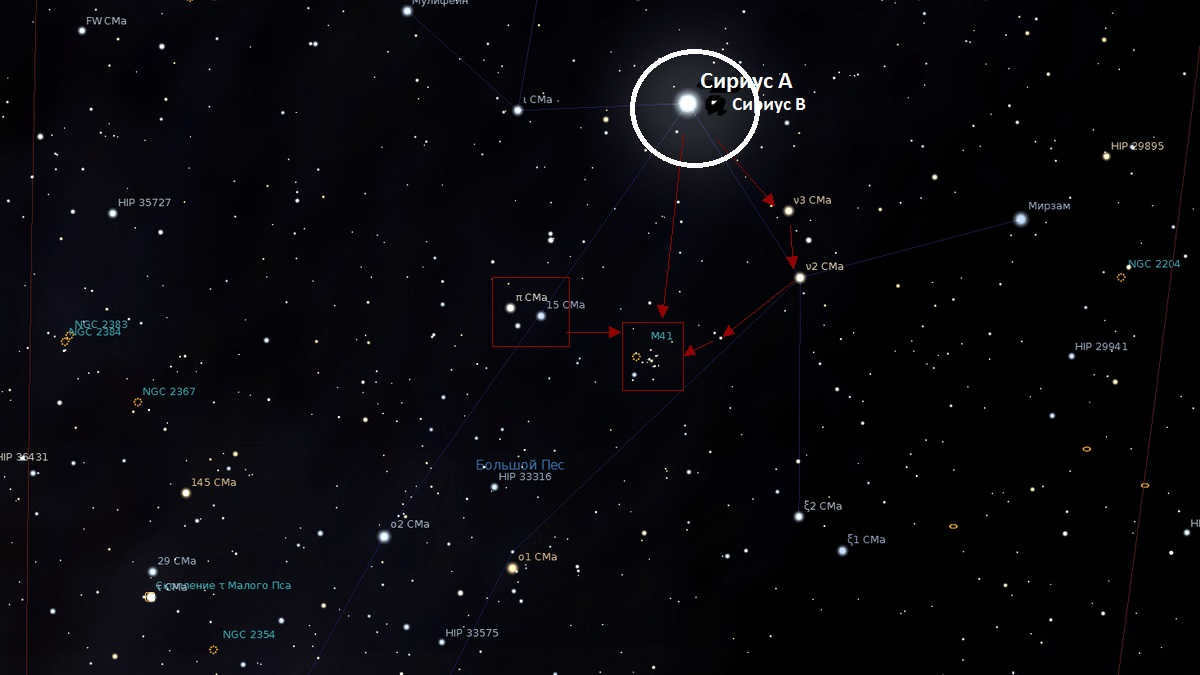
In the 20th century, it was discovered that the “twin of Sirius” possesses a temperature that is 25000K higher than that of the brightest star. The compact size of this intensely hot object led scientists to speculate that its high density was the cause of its state. This groundbreaking finding challenged the established theory regarding the origins of stars and introduced a new and significant factor in the evolution of the stellar population within the galaxies of the Universe. Scientific research has now obtained concrete evidence regarding the nature of stellar aging.
The science behind the process
In essence, white dwarfs are remnants of stars that have depleted their life force and energy. Unlike ordinary yellow dwarfs, which maintain a state of equilibrium, white dwarfs lack this stable balance. To withstand external forces, such as gravity, white dwarfs rely on powerful internal sources of energy. Without these sources, the star would collapse under its own gravity when losing some of its mass. The primary internal energy source is a fusion reaction that converts hydrogen into helium. The amount of hydrogen available is determined by the star’s mass, thus affecting the duration of fusion reactions. Once the hydrogen fuel is depleted, the star loses its equilibrium. Gravity takes over, causing the star to rapidly shrink from a massive red giant into a small white dwarf.
The process of cooling a white dwarf can be explained in terms of quantum physics. It involves the shrinking of atoms and the loss of their internal energy bonds. As the density increases, electrons combine to form a degenerate electron gas. In this state, the electrons interact tightly with each other, which counteracts the gravitational compression forces. Eventually, a bare nucleus is formed, lacking an outer shell or a corona.
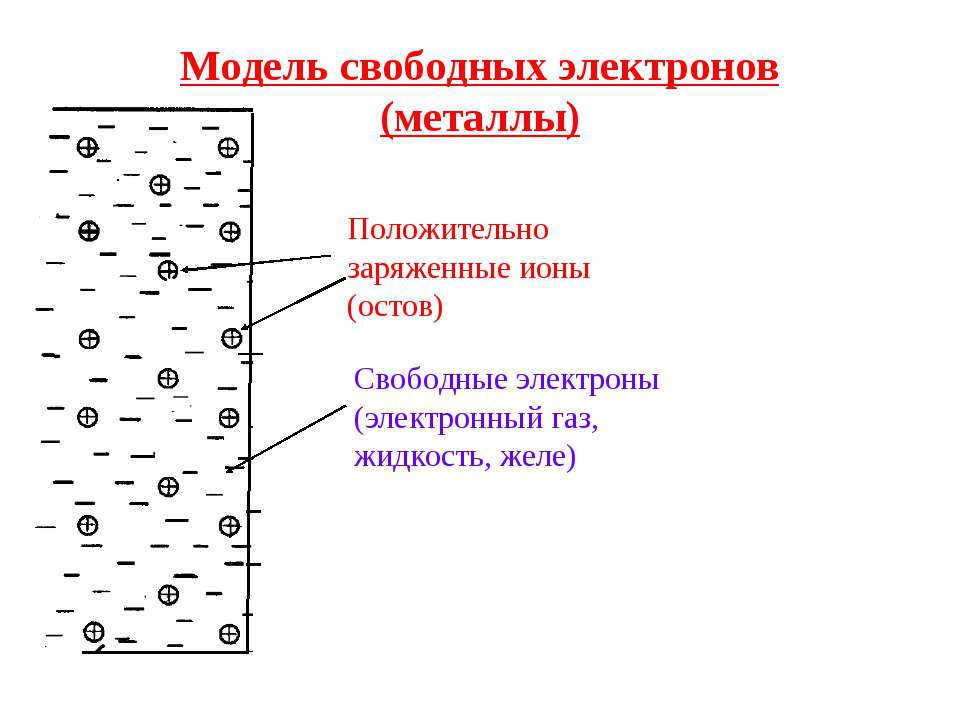
Electron degenerate gas
The electron gas possesses a unique feature. Throughout the process of compression, the velocity of the electrons steadily rises. The swiftest electrons have a tendency to occupy any available space, thereby diminishing the volume of the gaseous substance. As they get closer to the nucleus’s surface, the degenerate pressure weakens, resulting in a reduction in the temperature of the aging star. At this point, the ionization process of atoms is merely commencing, allowing the stellar matter to remain in its conventional gaseous state.
The configuration of white dwarfs
The arrangement of an aging star’s internal processes is manifested in its configuration. The primary characteristic of a white dwarf is its atmosphere. By analyzing optical observations, it can be deduced that the atmospheric layer of these stars is only a few hundred meters thick. Based on the spectrum’s composition, it is evident that each of these entities possesses its own unique chemical makeup. As a result, white dwarfs can be classified into two distinct categories:
There are two main types of white dwarfs, each with its own unique composition. The first type consists of a small amount of hydrogen (less than 0.05%), helium, carbon, calcium, iron, and titanium (known as star metal). These white dwarfs, known as hot white dwarfs, have a temperature of 50000K. On the other hand, the second type of white dwarfs is primarily composed of helium, with hydrogen atoms being extremely rare, making up only one in a million stars. These white dwarfs, known as cold dwarfs, have a much lower temperature, reaching only up to 5000K. The first type of white dwarfs, with hydrogen as the main component, are classified as spectral class DA, while the second type, with helium as the main component, are classified as type DB white dwarfs.
Researchers have determined that the smallest possible radius for white dwarfs is 10,000 kilometers.
The Smallest Size of a White Dwarf
Beneath the layer of unburned material lies the domain of relativistic degenerate electron gas, a substance separated isothermally. In this region, the temperature remains constant in all directions and reaches millions of degrees Kelvin. Thermal energy is transported from the star’s inner regions to its surface, where it is emitted into the surrounding cosmic space. These processes hinder the star from emitting bright light. The primary flow of thermal energy consists of X-rays.
The destiny of the white dwarf
Each star, similar to our Sun, will eventually reach the white dwarf phase. This period in the life of a star will be unremarkable, faded, and yet quite lengthy. Eventually, the white dwarf will reach its demise. At present, scientists believe that the age of the universe does not permit us to assert that there are already black, lifeless dwarfs within its depths. There exists a hypothesis that the number of white dwarfs is steadily increasing. Due to the limited exploration of space, we cannot accurately determine the precise quantity of such celestial objects. It is assumed that there are significantly more white dwarfs in the vast expanse of the Universe. Another intriguing question arises: which stars transform into white dwarfs, and which stars do not?
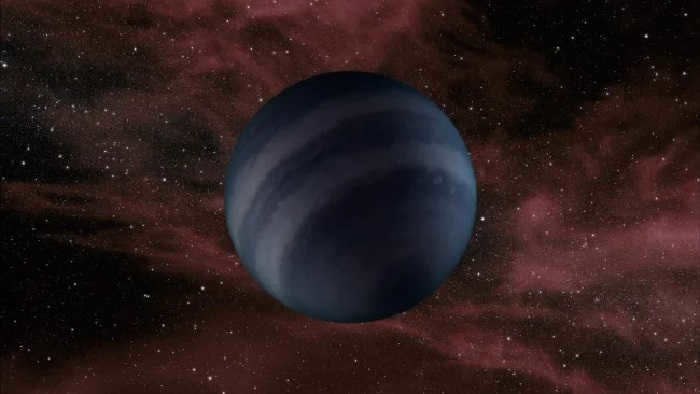
There is a lack of agreement within the scientific community regarding the nature of white dwarfs. It is commonly believed that approximately fifty percent of these celestial objects originate from the evolution of ordinary main-sequence stars, while the other half is formed within planetary nebulae. To date, there is no precise information available on the exact origin of white dwarfs. The prevailing theories and models are based on logical deductions.
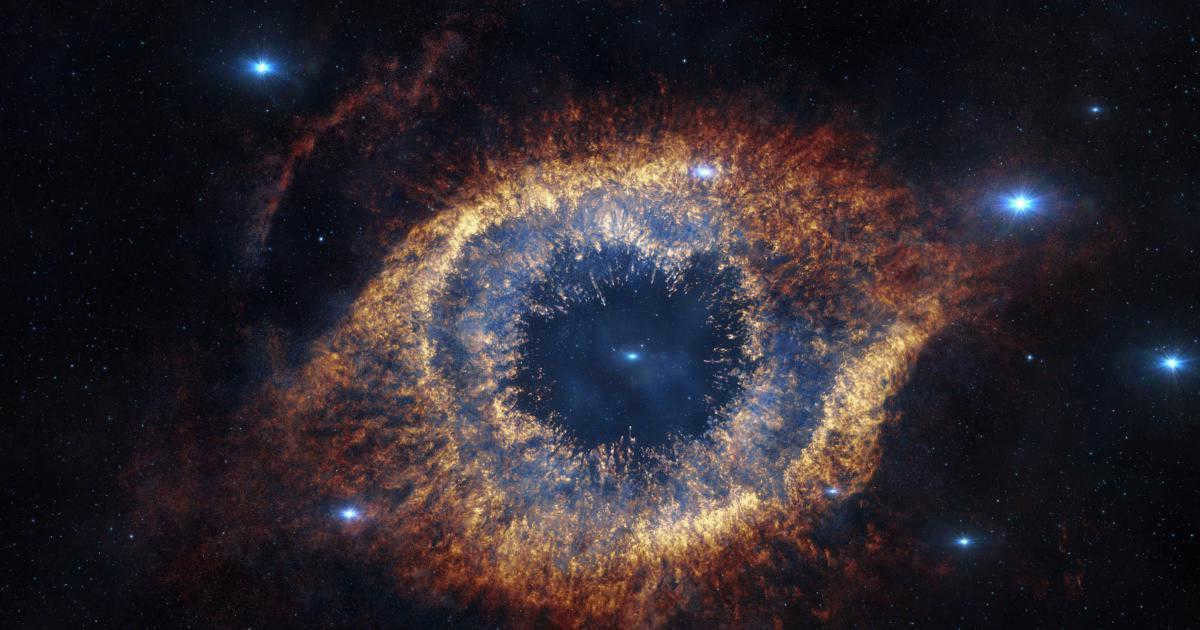
White dwarf planetary nebula
Despite the complexity of the question at hand, one thing is certain. All stars, whether they are massive, supermassive, or ordinary, will inevitably lose some of their stellar matter during their lifespan.
Even our Sun is destined to transform into a white dwarf. It will go through a slow aging process, ultimately ending with the star’s quiet death in the vastness of the Universe. However, for stars with twice the mass of the Sun, their evolution takes a different path. These stars, once they lose stability, can explode in a supernova flash, illuminating the cosmos, and transform into a small neutron ball.
Stellar transformation is an inevitable phenomenon that unfolds irrespective of our presence. The emergence and extinction of human civilization will transpire during epochs when our Sun is still distant from its ultimate fate. The Sun has the potential to annihilate us even while in the state of a red giant, scorching the Earth into cinders. It will take an immeasurable duration before a fresh white dwarf becomes visible through our telescopes.
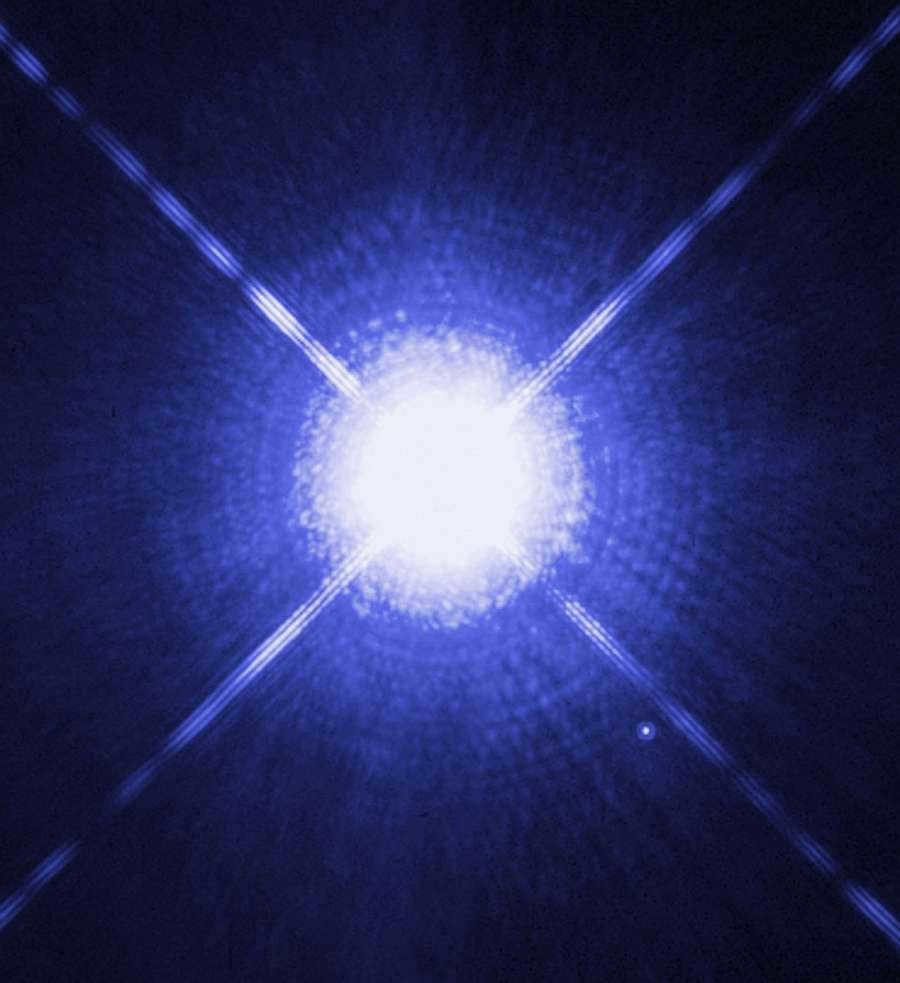
White dwarfs are celestial bodies characterized by a substantial mass (typically comparable to that of the Sun) and a compact size (roughly equivalent to the radius of the Earth). They form as a result of the evolution of red giants and have a smaller radius than the Chandrasekar limit for their specific mass. As a consequence of the cessation of thermonuclear energy production, white dwarfs possess unique qualities and properties. The estimated count of white dwarfs in our Milky Way galaxy ranges from 3% to 10% of the overall stellar population.
The Discovery of History

The movement of Sirius across the sky
In 1844, Friedrich Bessel, a German astronomer and mathematician, observed Sirius and noticed a slight deviation in its path. He hypothesized that Sirius had an unseen companion star of significant mass.
His hypothesis was confirmed in 1862 when Alvan Graham Clark, an American astronomer and telescope builder, was aligning the largest refractor at the time. Clark discovered a faint star near Sirius, which was later named Sirius B.
Formation Mechanism
White dwarfs are the end result of the evolution of a small star with a mass similar to that of the Sun. Under what circumstances do they come into existence? When the center of a star, like our Sun, exhausts all its hydrogen fuel, its core contracts to high densities, while the outer layers expand significantly, and, accompanied by a general decrease in brightness, the star becomes a red giant. The pulsating red giant then sheds its outer layers as they are loosely bound to the hot and extremely dense central core. These discarded layers subsequently form an expanding planetary nebula. As you can observe, red giants and white dwarfs are closely interconnected.
The process of cooling a white dwarf and the solidification of its central region
The core compression results in sizes that are exceptionally small, yet it remains within the Chandrasekar limit, which is the maximum mass a star can have to exist as a white dwarf.
Varieties of white dwarfs
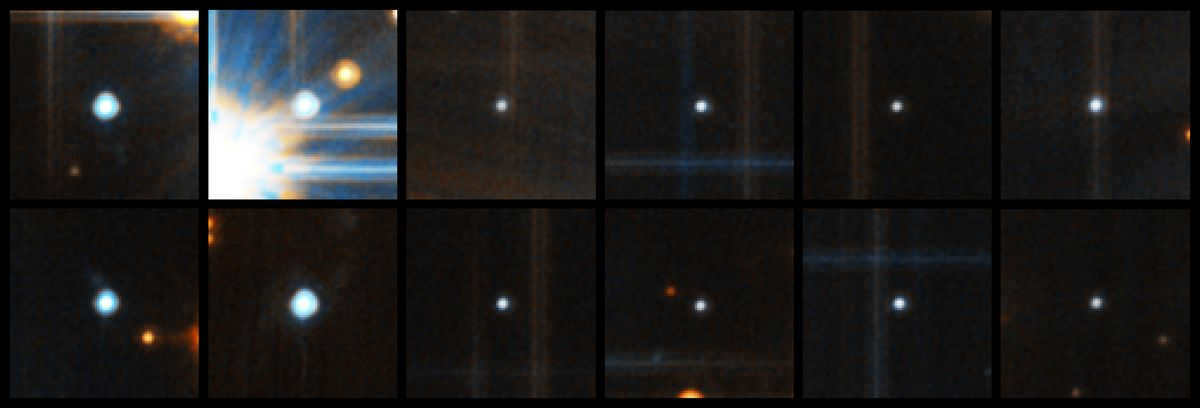
These white dwarfs can be classified into two distinct groups based on their spectra. The most common group is the “hydrogen” spectral class DA, which accounts for up to 80% of all white dwarfs. These stars do not show any helium spectral lines in their spectra. The second group is the rarer “helium white dwarf” type DB, whose stars’ spectra do not display any hydrogen lines.
An assortment of scenarios for the origin of helium layer flares in red giants was proposed by American astronomer Iko Iben. He effectively put forward the mechanism of shell shedding during the various stages of helium flare development – both at its peak and during the period between two flares. The formation of these flares is dependent on the respective shell shedding mechanism.
Before Ralph Fowler published his paper “Dense Matter” in 1922, the density and pressure inside white dwarfs were considered paradoxical due to their high density and physical characteristics. Fowler proposed that unlike main-sequence stars, which can be described by the equation of state for an ideal gas, white dwarfs are governed by the properties of a degenerate gas.
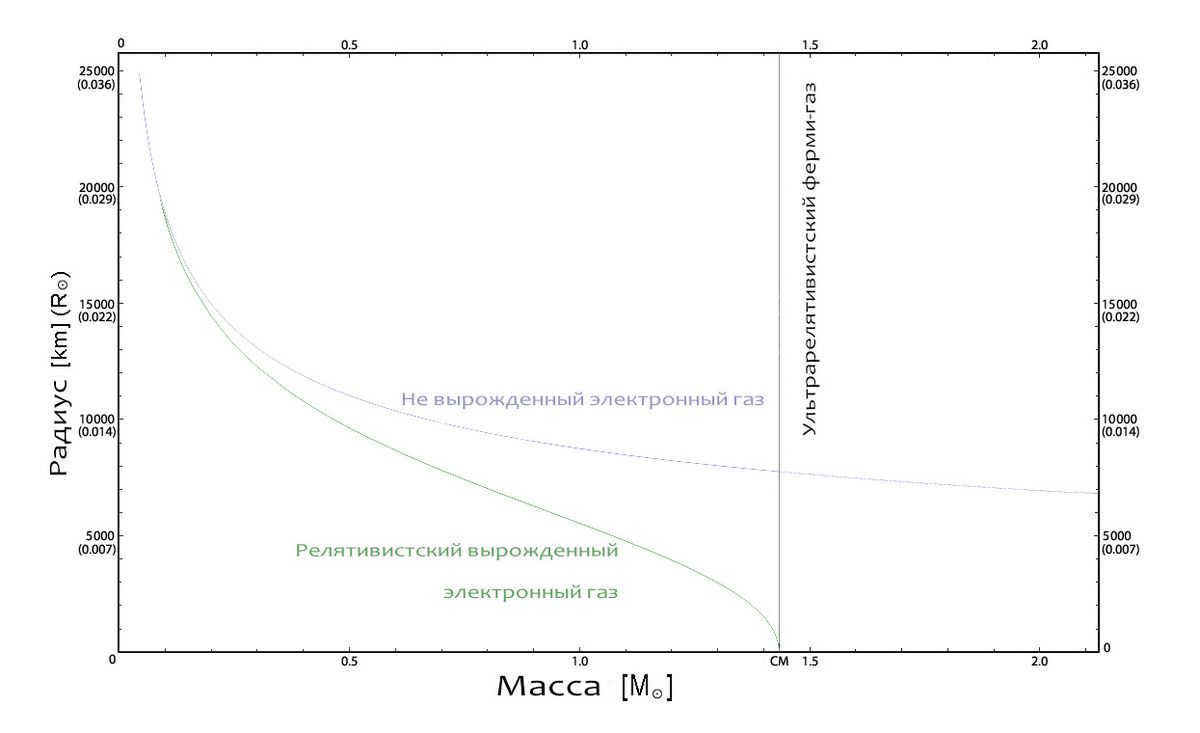

This graph shows how the radius of a white dwarf is dependent on its mass. It is important to note that the ultra-relativistic limit of fermi-gas aligns with the Chandrasekar limit.
A nucleated gas forms when the distance between its particles becomes smaller than the de Broglie wave, leading to the emergence of quantum mechanical effects influenced by the identity of the gas particles.
In white dwarfs, the tremendous densities cause the atom shells to collapse under internal pressure, resulting in the substance transforming into an electron-nuclear plasma. The electronic aspect of this plasma is described by the properties of a degenerate electron gas, which is similar to the behavior of electrons in metals.
Organization
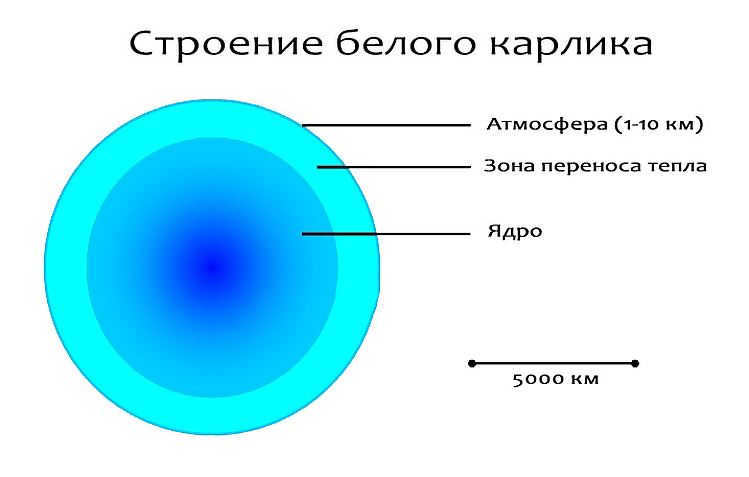
One of the most prevalent types of these celestial bodies is the carbon-oxygen white dwarf, which is comprised of a shell composed of helium and hydrogen.
Resources on the subject
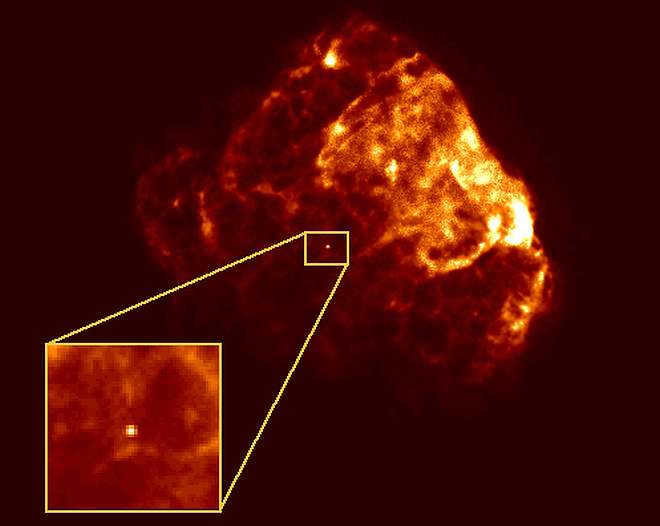
From a statistical standpoint, the size of a white dwarf is similar to that of Earth, with a mass ranging from 0.6 to 1.44 times that of the Sun. These celestial objects exhibit surface temperatures ranging from – to 200,000 K, which is the main factor determining their color.
Nucleus
The core of a white dwarf is characterized by an incredibly high density, where gravitational equilibrium is maintained by a degenerate electron gas. The temperature and gravitational compression within the white dwarf are balanced by the pressure exerted by the degenerate gas, ensuring a relatively stable diameter. The luminosity of a white dwarf is primarily a result of the cooling and compression of its outer layers. The composition of a white dwarf depends on the evolutionary stage of its parent star, consisting mostly of carbon with traces of oxygen, hydrogen, and helium that transform into a degenerate gas.
Development
The advancement of a star across the Hertzsprung-Russell diagram is propelled by the helium flash and the shedding of its outer shells by the red giant. This process alters the star’s predominant chemical composition. Subsequently, the white dwarf undergoes a stable life cycle until it begins to cool down, causing a decrease in luminosity and rendering the star invisible. At this point, the star enters the phase referred to as the “black dwarf,” which is considered the ultimate outcome of evolution. However, this term is becoming less prevalent in contemporary literature.
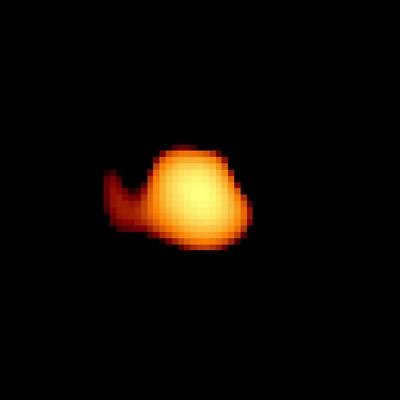
The matter flows from a star to a white dwarf, but the white dwarf itself is not visible because it has low luminosity.
The presence of nearby stellar companions helps prolong the life of white dwarfs by allowing matter to fall onto their surface and form an accretion disk. The unique process of matter accretion in binary systems can cause an accumulation of matter on the surface of white dwarfs, which can lead to the explosion of a new star or a type Ia supernova (in the case of particularly massive white dwarfs).
Astronomers have observed a spectacular event known as a supernova explosion. This phenomenon occurs when a white dwarf star in a binary system accretes mass from a red dwarf star. If the accretion process is unstable, it can lead to a unique explosion, such as the one witnessed in the U Gem (UG) system. Similarly, new-like variable stars can also experience a catastrophic explosion due to unsteady accretion.
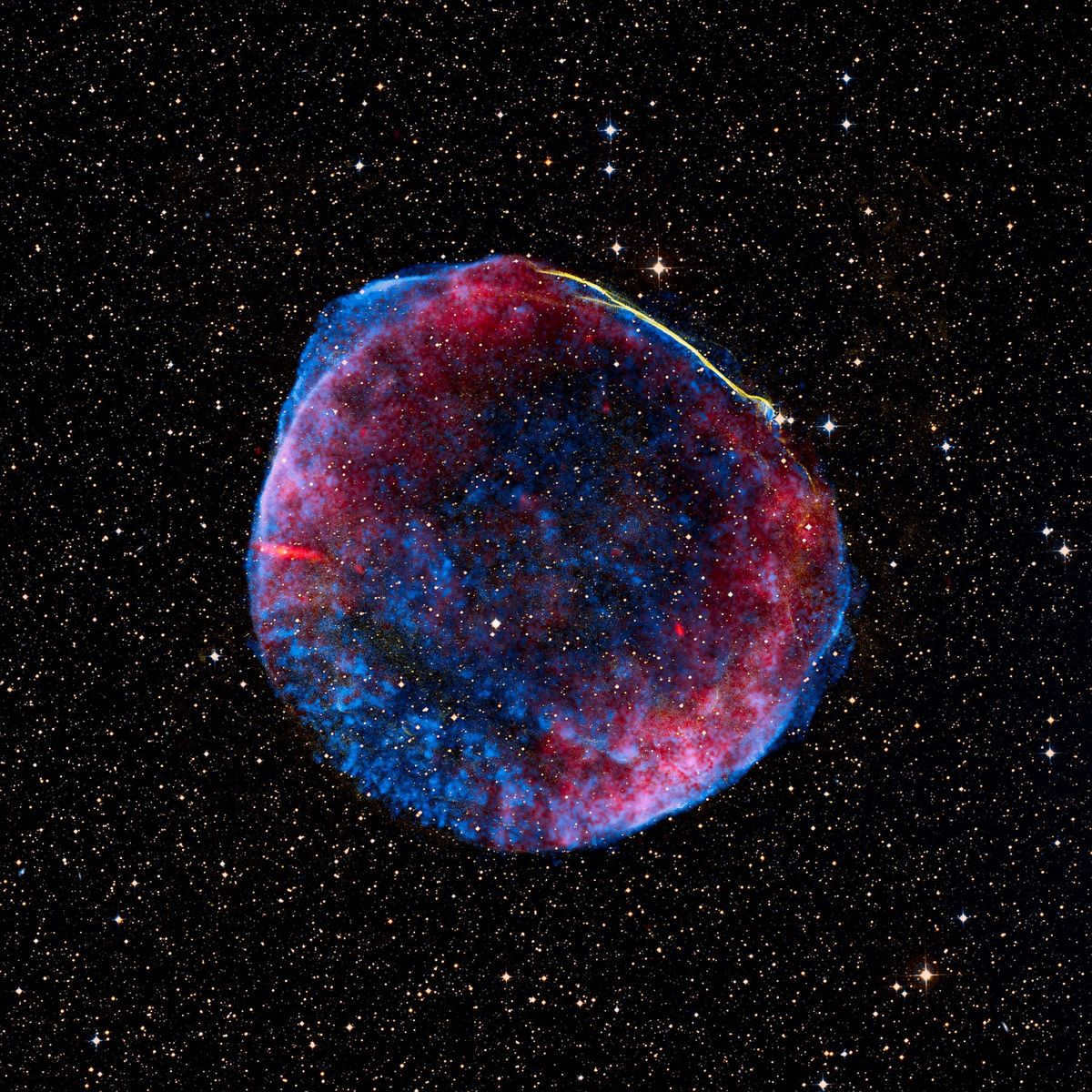
The explosion of SN 1006, a white dwarf in a binary system, occurred as it accreted matter from its companion star. This gradual increase in mass led to a thermonuclear explosion that destroyed the dwarf.
Placement on the Hertzsprung-Russell diagram.
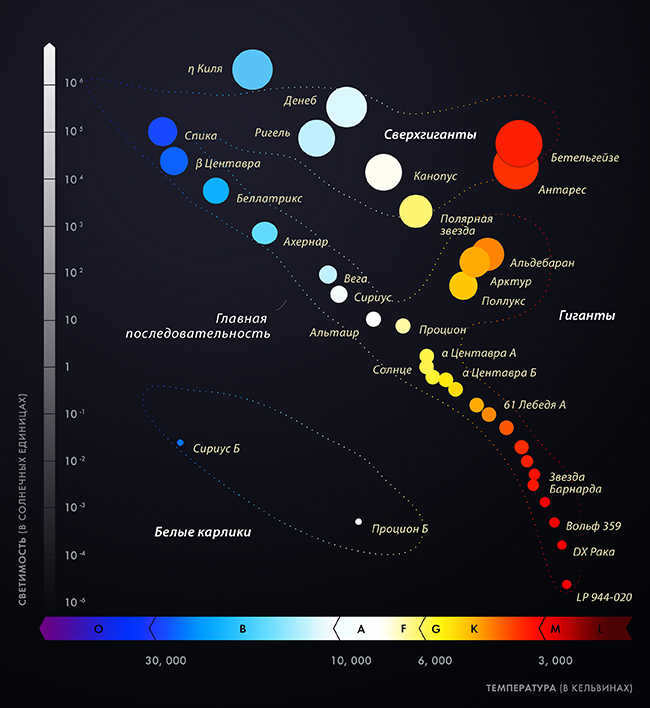
The Hertzsprung-Russell diagram highlights the specific location of white dwarfs.
White dwarfs can be found in the lower left section of the diagram, indicating that they have evolved from the red giant phase and are no longer part of the main sequence.
This area is populated by hot, low-luminosity stars, making it the second most common category of stars in the observable Universe.
Classification of Spectra
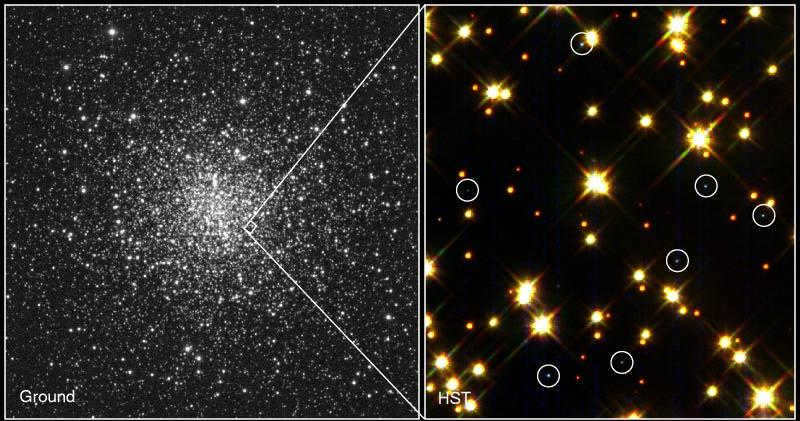

This Hubble image captures the presence of numerous white dwarfs in the globular cluster M4.
These white dwarfs belong to a specific spectral class known as D (derived from the term “dwarfs”). However, in 1983, Edward Sion introduced a more precise classification system that considers the variations in their spectra. This classification system includes subclasses such as DA, DB, DC, DO, DZ, and DQ, which indicate the presence or absence of hydrogen, helium, carbon, and metal lines. Additionally, spectral features like P, H, V, and X provide information on the presence or absence of polarization, magnetic fields, variability, peculiarity, or unclassifiability of white dwarfs.
- Which white dwarf is closest to the Sun? The closest one is van Maanen’s star, an faint object situated just 14.4 light-years away from the Sun. It is positioned at the center of the Pisces constellation.
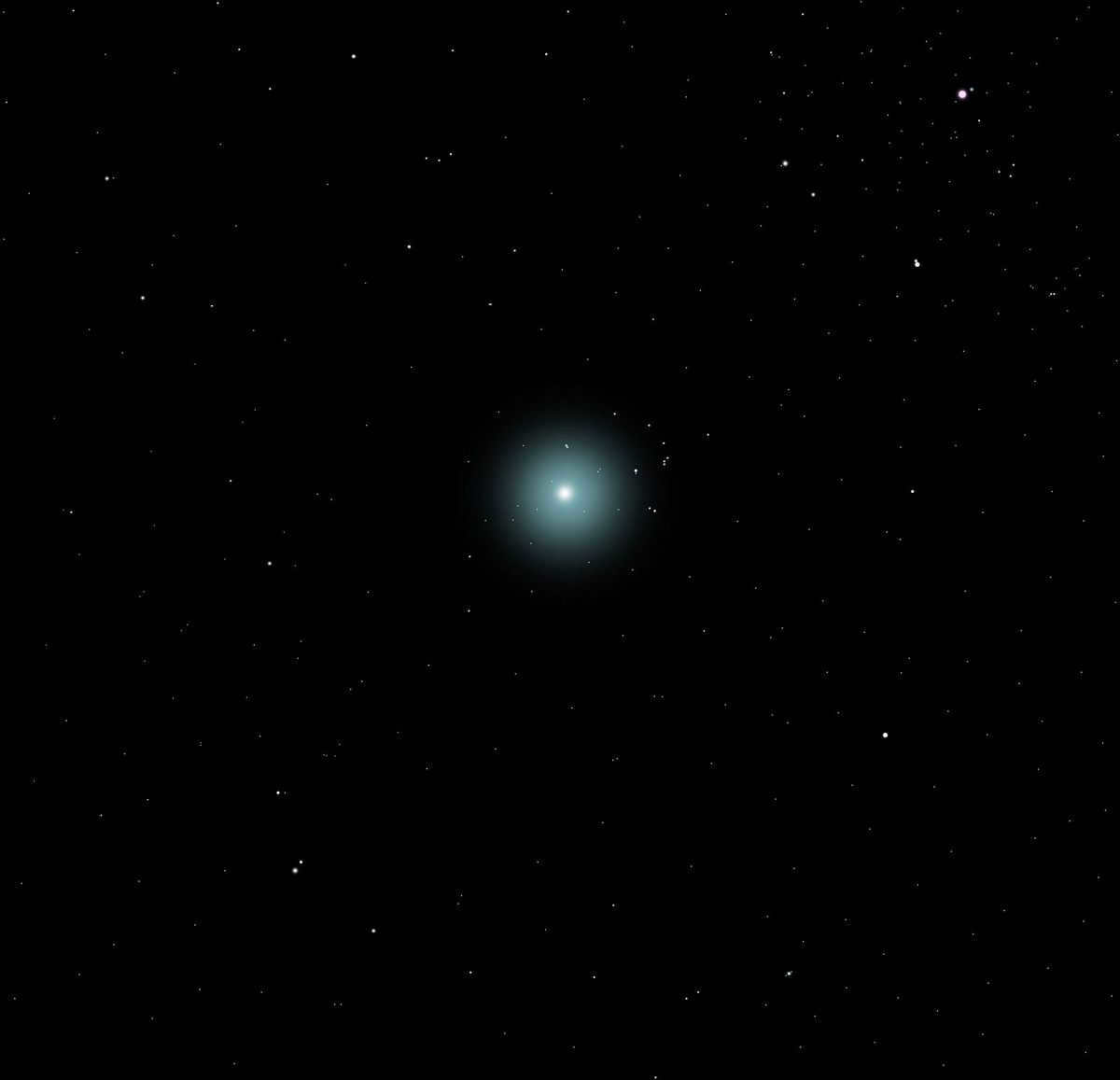
Van Maanen’s star is the nearest white dwarf that exists in isolation.
Van Maanen’s star is not visible to the naked eye due to its low brightness, with a stellar magnitude of 12.2. However, if we consider a white dwarf within a star system, the closest one is Sirius B, which is located 8.5 light-years away. Interestingly, Sirius B is the most well-known white dwarf.
Comparison between the size of Sirius B and Earth
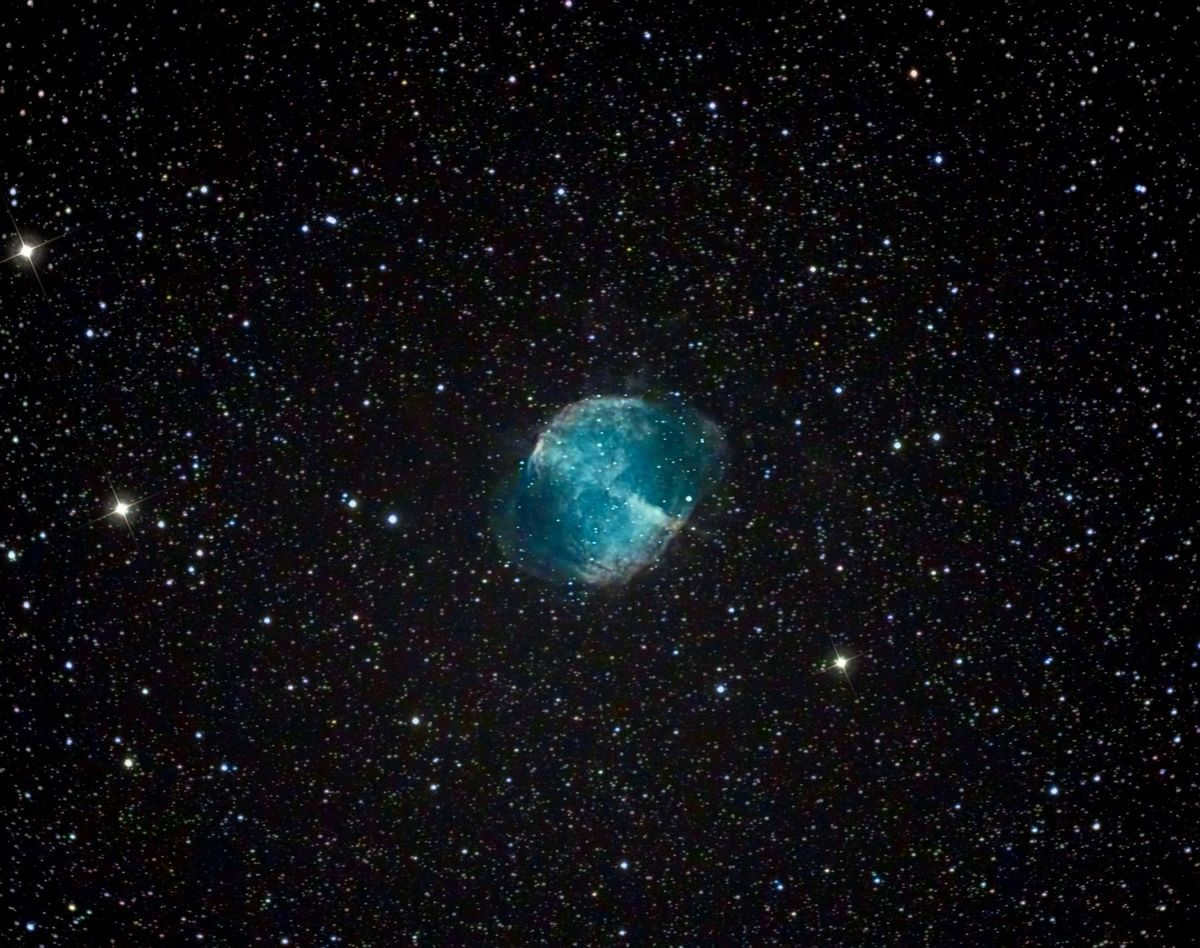
The celestial object referred to as the Dumbbell Nebula, is alternatively identified as M27 in astronomical circles.
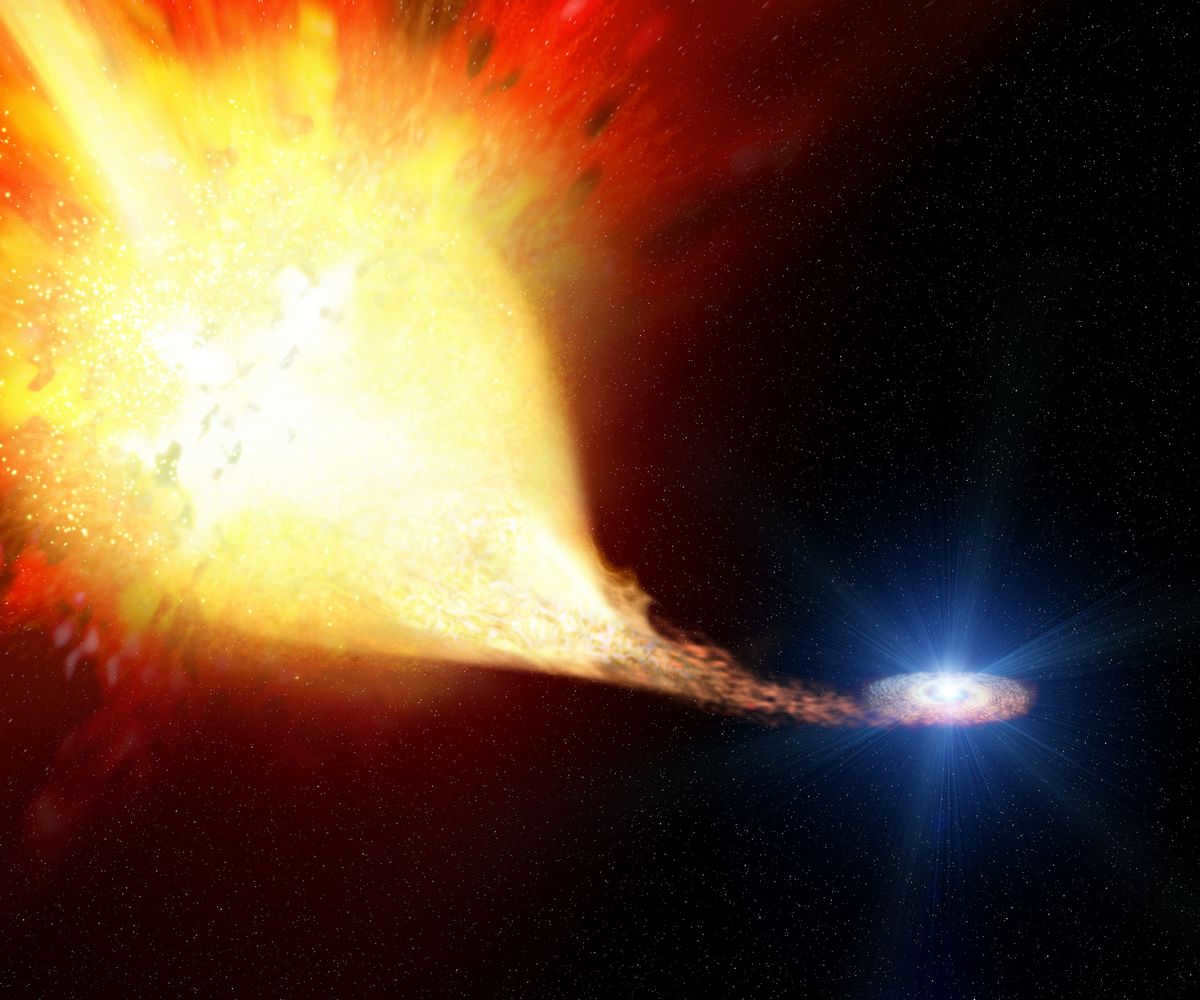

An artist’s drawing depicting the transfer of matter from a star to a white dwarf
Additional Resources
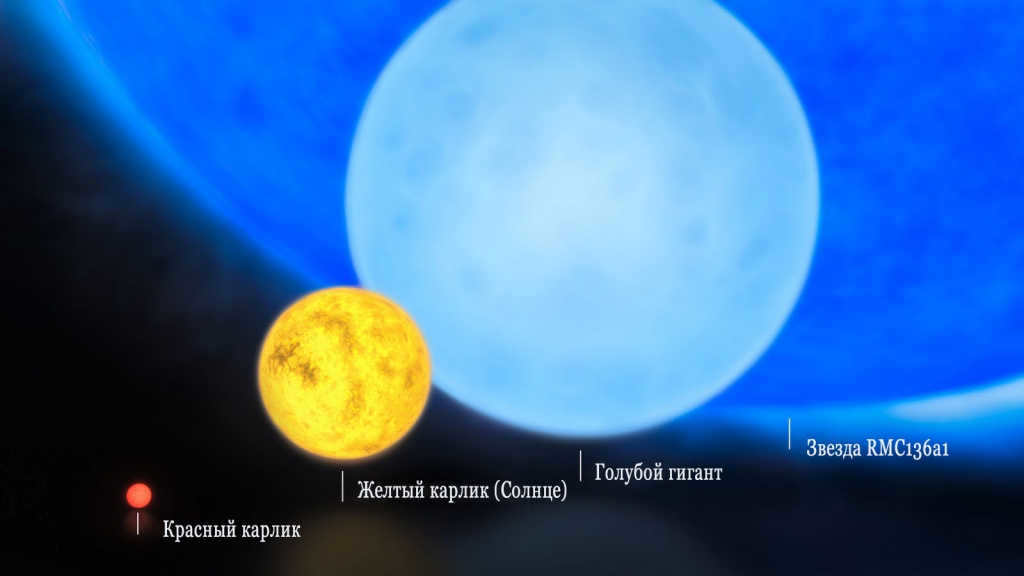
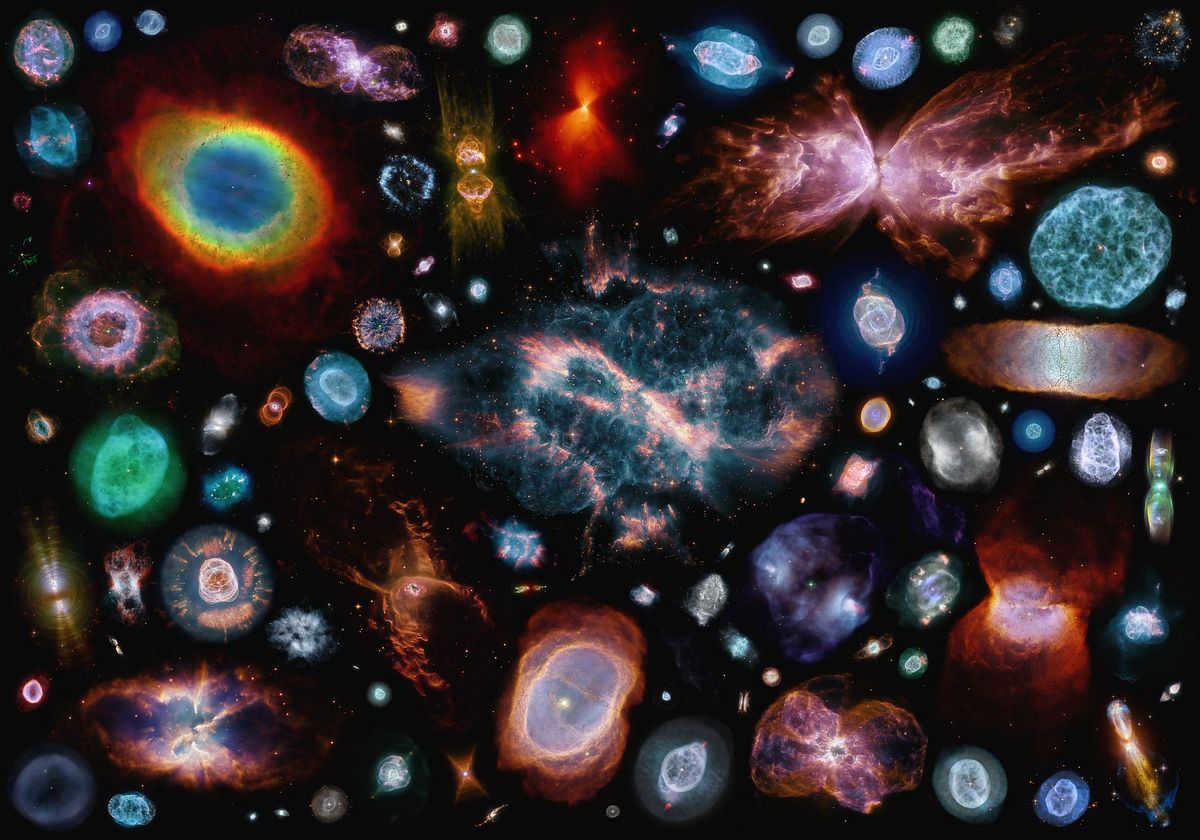
A collection of 100 planetary nebulae, the author guarantees the accuracy of the scale.
Responses to inquiries
- How does a white dwarf differ from a neutron star? The entire life cycle of a star is determined by its initial mass, which dictates its brightness, lifespan, and ultimate fate. A star with a mass between 0.5 and 1.44 times that of the Sun will eventually expand into a red giant, shedding its outer layers to form a planetary nebula and leaving behind a solitary core composed of degenerate gas.
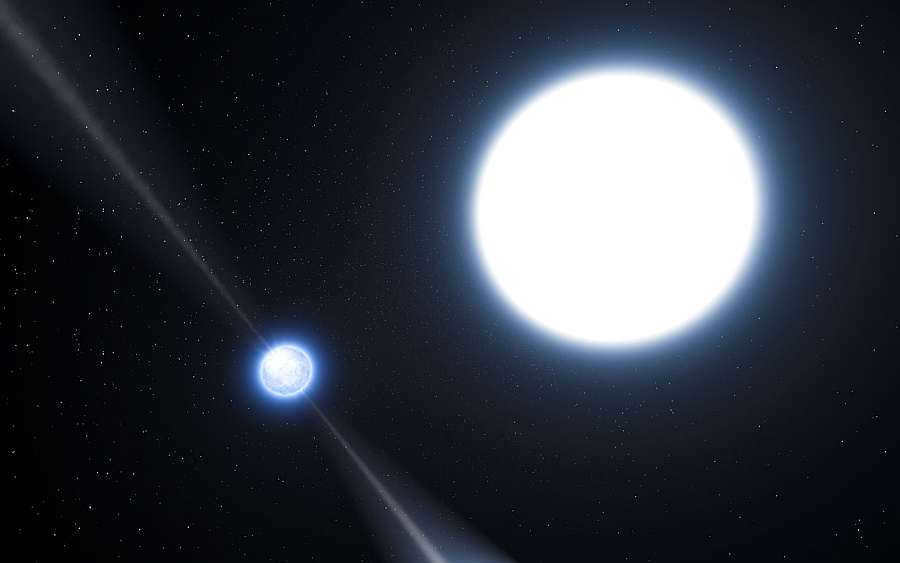

The combination of a neutron star and a white dwarf forms the Pulsar PSR J0348 +0432.
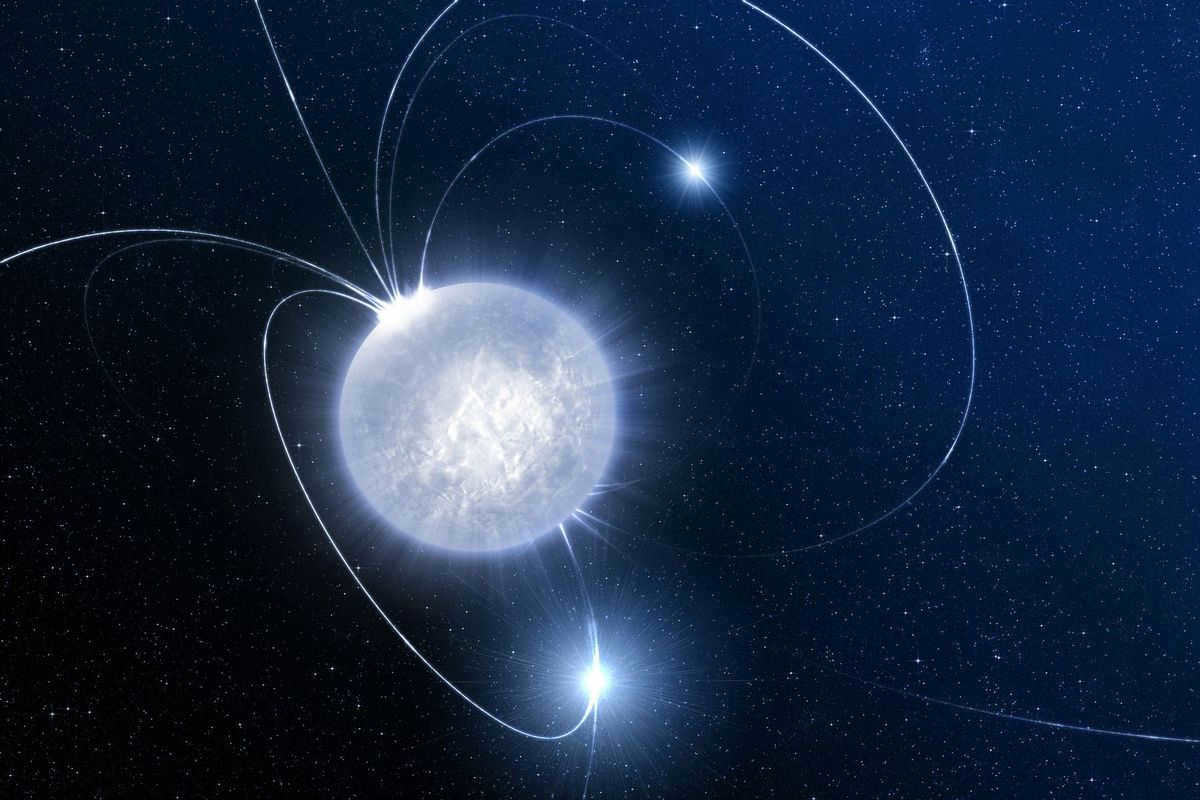

Illustration of a magnetar
Engaging documentary showcasing the protagonists of our article
The luminescence emitted by white dwarfs provides valuable insights into the destiny of their defunct planetary systems: these luminous remnants can be detected within the atmospheres of such celestial bodies. We elucidate the information that can be gleaned from white dwarfs regarding exoplanets, the chronicles of the cosmos, and the processes involved.
What do we mean by white dwarfs?
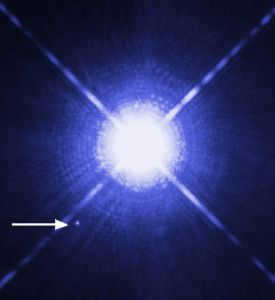
The emergence of white dwarfs
Scientists have long predicted that young white dwarfs would experience early shrinkage as they evolve. According to calculations, a typical white dwarf could potentially shrink by several hundred kilometers within its first million years of existence, primarily due to gradual cooling.
In 2017, a team of Russian astrophysicists, led by Prof. Sergey Borisovich Popov from the Sternberg State Astronomical Institute of Moscow State University, the Institute of Astronomy of the Russian Academy of Sciences, the A. I. Institute of Theoretical and Experimental Physics, and the National Institute of Astrophysics (Milan), made a groundbreaking discovery. They successfully documented the first-ever observation of a young white dwarf with an exceptionally rapid decrease in radius.
Russian scientists and their Italian colleagues have conducted research on the X-ray emissions of the binary system HD49798/RX J0648.0-4418, which is situated in the Korma constellation and is approximately two thousand light years away from Earth. The findings of this study have been recently published in the February 2018 edition of the esteemed journal, Monthly Notices of the Royal Astronomical Society.
White dwarf stars start their evolution as the exposed degenerate cores of red giants that have shed their outer layers – in other words, as the central stars of young planetary nebulae.
The surface temperatures of the cores of young planetary nebulae are extremely high – for instance, the temperature of the central star of the NGC 7293 nebula ranges from 90,000 K (estimated from absorption lines) to 130,000 K (estimated from the X-ray spectrum). At these temperatures, the majority of the spectrum is made up of hard ultraviolet and soft X-rays.
Simultaneously, the observed white dwarf stars are predominantly categorized into two main groups based on their spectra – the “hydrogen” spectral class DA, which lacks helium lines in its spectra and accounts for approximately 80% of the white dwarf population, and the “helium” spectral class DB, which lacks hydrogen lines in its spectra and makes up the majority of the remaining 20% of the population.
The reason behind this disparity in the composition of white dwarf atmospheres has long been a mystery. In 1984, Iko Iben examined scenarios in which white dwarfs “escaped” from pulsating red giants on the asymptotic giant branch during various phases of pulsation.
Late stage
During the final phase of evolution, red giants that have a mass of up to ten times that of the Sun possess a degenerate core primarily consisting of carbon and other heavier elements. This core is surrounded by an unignited layer of helium, where a triple helium reaction occurs.
Above the helium layer source, there exists a layer of hydrogen, where thermonuclear reactions from the Bethe cycle occur, transforming hydrogen into helium. This hydrogen layer is surrounded by a shell of hydrogen, making it the primary source of helium production for the helium layer source.
Thermal instability is a major concern when it comes to helium burning in a layer source, primarily because of its incredibly high temperature dependence. This issue is further aggravated by the faster rate at which hydrogen converts to helium compared to the rate at which helium is consumed. As a consequence, helium starts to accumulate, leading to compression and degeneracy, which then triggers a sudden surge in the rate of the helium triplet reaction. Ultimately, this gives rise to the formation of a layered helium flare.
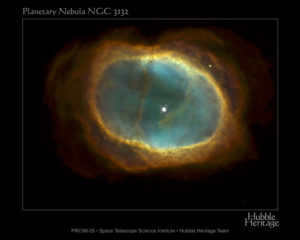
How can white dwarf light assist scientists?
A recent study led by Mark A. Hollands reveals that even after a star dies, remnants of a planetary system can still be detected in the Milky Way.
If planets or their cores manage to survive, gravitational interactions among them may cause debris to eventually converge onto the remains of the parent star. These remnants, known as white dwarfs, consist mainly of carbon and oxygen and are surrounded by a thin but dense shell of hydrogen and helium.
Naturally, any object that approaches too closely will be torn apart by the intense gravity of the white dwarf, with its fragments subsequently falling onto the star’s surface and becoming mixed with the hydrogen and helium in the shells.
Lithium, calcium, and sodium have been detected in the photospheres of the dwarf stars, while the dwarf LHS 2534 also shows the presence of magnesium, potassium, chromium, and iron. The clastic material that falls onto these white dwarfs has a composition that is rich in lithium and low in calcium, similar to the Earth’s continental crust, but different from other bodies in the solar system.
When a star is impacted by an object, elements from the destroyed object, such as lithium and calcium, start emitting their own light with distinct spectral characteristics, making their identification unequivocal.
Many white dwarfs are too hot, causing their intense brightness to obscure any evidence of contamination. Nonetheless, the recent Gaia mission has provided a breakthrough by identifying the positions of numerous ancient, cooler white dwarfs. As a result, astronomers have successfully detected distinct indications of planetary “remnants” within the atmospheres of these celestial bodies.
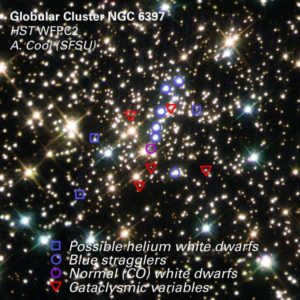
In the case of the WD J2317+1830 system, there was an observation of excessive infrared emission, indicating that remnants from the circumstellar disk are still being accumulated by the dwarf star. The estimated rate of accumulation is approximately 3×10 6 grams per second.
Considering the possibility that the precursor of this white dwarf was a star with a mass of 4.8 solar masses, and the theory that planet formation occurs even after the death of a star has been proven unsuccessful, it provides evidence that stars of spectral type B can form planetary systems and survive until the white dwarf stage.





